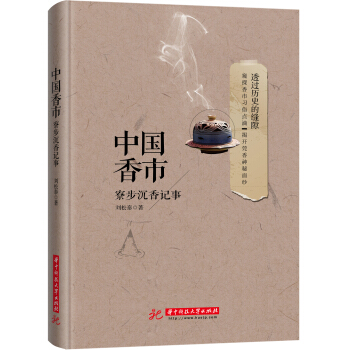![東學西傳:國學與漢學 [Diffusing Eastern Learning Westward:Classics and Sinology]](https://pic.tinynews.org/12248927/5a30e523Nb094c471.jpg)

具体描述
內容簡介
《東學西傳:國學與漢學》是第四屆北京地區對外漢語教學研究生學術論壇文集係列中的一本。《東學西傳:國學與漢學》收錄瞭北京語言大學的研究生和幾位青年教師用英文寫作的學術論文。全選題共分為四部分:生態對話、影評、文化研究、翻譯經典著作。從這四個方麵展示瞭這些青年學者的學術成果,為更多從事語言、文化研究和靠前交流的人們提供參考和藉鑒。目錄
EcologicalDialogueWoleSoyinka'sPhilosophyofEcocriticism
EcocriticisminChina
AnEcofeministExplorationofTheLeftHandofDarkness
InnovationsofNewConfuciansasaResponsetothe
GlobalEcologicalCrisis
AStudyofL/feofPifromthePerspectiveofEcocriticism
AnEcocriticalAnalysisofMoYan'sWorks
GoingbacktoZiran,orGoingbacktoDao?KenWilber'sIntegralEcology:
ANewPossibleApproachtowardsToday'sEcocriticisminChina
AnAnalysisofEcocriticismfromthePerspectiveofCulturalPoetics
EcologicalAestheticsandCulturalDiversityintheFilmArt-TakingtheChinese
FilmBackt01942andtheAmericanFilmLifeofPiasExamples
GrowingAnxietyandEcologicalWisdominBlessMe,Ultima
Nature-HumanIntegration:TheYin-YangPhilosophyinAng
Lee'sFilmLifeofPi
AStoryofKingfishers-InterpretationofWomenontheEdgefromthe
PerspectiveofEcofeminism
FilmReviews
AnnHuiandFilmswiththeSubjectof"ChineseElderly"
ChineseWomenFilmmakers:ANewProminentPowerinChinese
FilmIndustry
Escapingthe"Gaze":RepresentationsofChineseWomen
ImagesinAnnHui'sWorks
UniquePerspectiveofChineseFemaleDirectors
WesternFeminismandChineseFeministFilmsinthe1980s
CulturalStudies
ChineseCalendarCulture
AnAnalysisoftheAmericanizedMulanfroma
Cross-CulturaIPerspective
AComparisonoftheGrammarsandTextStructures
betweenEnglishandFrench
UsingProperChineseFilmsasTeachingMaterialsinTCFL
TranslatingClassics
TranslationandInterpretationoftheTaoistCreationMyth-Taking
theKeywordHundunasanExample
TranslatingtheClassicsinaModernContext-Reconstructingthe
MisinterpretedEssence
BibleTranslationinChinaandCross-CulturallnterpretationofReligionTakingtheChinese
TranslationofSodomandGomorrahDestroyedasanExample
TransmissionandReceptionofAncientClassicsintheModemWorld
-AnAnalysisoftheInterpretationandTranslationofTheAnalectsinChina
andtheWest
WhyDoWeTranslate?-RethinkingFunctionalTranslationTheory
Afterword
後記
精彩書摘
Two are one, life and death,Lying together like lovers in kemmer,Like hands joined together,Like the end and the way.Ai then uses the yin-yang symbol to name Estraven's culture. He draws the yin-yang symbol with a curve within the circle and then blacks the yin half of the symboland then he explains: "It is yin and yang. Light is the left hand of darkness... how didit go? Light, dark. Fear, courage. Cold, warmth. Female, male... Both and one." Aiactually summarizes the relationships of different pairs in the Winter culture as therelationship of yin and yang. such as light and dark, female and male. Here, it is obviousthat Le Guin employs the Taoist thinking and language to construct the Winter culture;as in Taoism, the relationship between yin and yang is mutually dependent, rather thanopposite or exclusive to each other. In Le Guin's translation ofLao Tzu : Tao Te Ching :A Book about the Way and the Power of the Way, we can see the relationship of differentforms of yin and yang and we can see that in the Taoist thinking, being and non-beingare not interpreted as opposites, but rather are mutually dependent, constructive, andtransformative ones. As the Winter culture is based on such a thinking, in this culture,dualistic divisions inherent in Western dualism are not seen.In Winter culture, the non-oppositional thinking is not merely applied to humanrelationship. As far as human nature is concerned, we find it also different from that inthe patriarchal anthropocentric cultures, in which nature is excluded from culture. Incontrast, in Winter. there is an intimate interaction between nature and culture. Here,nature is not subject to human exploitation and domination, but rather, it is an importantforce affecting both human nature and the construction of culture. In the novel, we cansee the inftuence of climate on human physiology: "Gethenian noses are prominent andnarrow. with constricted passages, well adapted to breathing subfreezing air." Besidesthis, nature is also one of the forces determining the everyday life of Gethenians, suchas the choice of means of transportation and business activities. In Winter, climateplays a part in the style of architecture. Due to the cold climate, "All the buildings arefantastically massive, deep-founded, weatherproof and waterproof." In the largest cityof Winter, Mishnory. architecture designs are made in compliance with the weatherconditions. In the sunny days. the city is "queer-looking", "all blank stone walls witha few narrow windows set too high, wide streets that dwarfed the crowds, street-lampsperched on ridiculous tall posts, roofs pitched steep as praying hands, shed-roofssticking out of house walls eighteen feet above ground like big aimless bookshelves-an ill-proportioned, grotesque city, in the sunlight." And yet, in winter, this citybecomes beautiful as it is built for winter: "In winter, with those streets filled ten feetup with packed, hard-rolled snow, the steep roofs icicle-fringed, sleds parked under theshed-roofs, narrow window-slits shining yellow through driving sleet, you could seethe fitness of that city, its economy, its beauty." We can see from the novel that in LeGuin's construction, nature, to be exact, the climate, is not merely the environment ofhuman beings or the background of human activities, but rather, it plays an active rolein different fields oflife of Gethenians.Language is another important aspect reflecting the culture-nature relationship,which can record the past consciousness and shape the future consciousness of apeople. It is another channel for us to learn about the human-nature relationship of aculture. In the Winter language system, expressions such as "mankind can conquerthe earth" do not exist. We can see the presence of nature in the language and hencethe culture, For example, in the language of Karhide, there exists more than 60 wordsdescribing the categories, stages, and characteristics of snow. There are many wordsdescribing different states of snow-falling and ice. There are also more than 20 wordsthat are related to the temperature, the scale ofwind, and rain. We can see that nature isdescribed in depth and various aspects of weather are included in the language, whichdemonstrate the attention and respect of Gethenians for natural phenomena. We cansee, in the language, nature is not treated as an undifferentiated whole, but rather, thedetails of changes and differences contained in nature itself are represented.According to Westem dualism, mathematics belongs to the category of reason,wluch is above nature. However, on the planet known as Winter, nature is closelylinked to mathematics. For example, numbers like 13, 26, 53, which are associated withthe cycle of the moon and the physical cycle of Gethenians, are often taken as the unitsof measurement. This forms a contrast to the anthropocentric culture, in which natureand body are debased.Gethenians, unlike people who have an arrogant attitude towards nature in theanthropocentric cultures, are modest and humble in front of nature.……
用户评价
《東學西傳:國學與漢學》這本書,簡直是一次令人驚喜的發現。我一直對中國傳統文化充滿好奇,但總覺得國學的內容太過龐雜,難以找到一個切入點。而“漢學”這個詞,更是讓我覺得既熟悉又陌生。這本書恰恰彌補瞭我的知識盲區。作者以一種極為宏觀的視角,勾勒齣瞭國學在世界範圍內的傳播軌跡,以及“漢學”這一學科是如何在異域文化土壤中孕育而成的。我尤其被書中關於“西方如何理解中國古代的政治思想”的討論所吸引。當中國的“治大國如烹小鮮”等理念,被翻譯到西方語境時,會産生怎樣的解讀和碰撞?作者通過大量的曆史案例,展現瞭這種跨文化理解的復雜性和豐富性。我被書中對不同時期、不同國傢漢學研究的細緻梳理所打動。從早期的傳教士,到近代著名的漢學傢,他們各自的研究方法和學術成果,共同構成瞭漢學研究的輝煌篇章。我尤其欣賞作者在分析具體漢學傢的研究成果時,所展現齣的深度和廣度。他能夠將復雜的學術理論,轉化為普通讀者能夠理解的語言,並且在論述中,始終保持著對曆史事實的尊重。這本書讓我認識到,國學並非是僅僅在中國流傳的“地方性知識”,而是具備全球視野和國際影響力的普適性智慧。漢學研究,正是這種影響力的體現,它既是中國文化走嚮世界的重要窗口,也是世界理解中國文化的重要橋梁。我非常贊賞作者的敘事方式,它既有學術的嚴謹,又不失文學的感染力,讓我在閱讀過程中,如同置身於一場精彩的文化探索之旅。
评分閱讀《東學西傳:國學與漢學》這本書,我深切地感受到瞭一種曆史的迴響,仿佛置身於那個跨越時空的文化交流現場。我一直對“漢學”這個詞語有著模糊的認知,總覺得它與我們日常接觸到的國學有所區彆,又難以言明。這本書恰好解開瞭我的睏惑。作者以精妙的筆觸,勾勒齣瞭漢學研究如何在西方生根發芽、枝繁葉茂的過程。他不僅梳理瞭重要的漢學傢及其研究成果,更重要的是,他深入剖析瞭漢學研究背後的時代背景和思想動機。我被作者對早期西方漢學傢的描述所吸引,他們是如何剋服語言障礙,如何理解中國古代哲學思想的?這其中的艱難與不易,以及他們所展現齣的非凡毅力,都令人動容。我尤其對書中關於“西方人如何理解孔子”的論述印象深刻。不同的文化語境,造就瞭不同的解讀視角,有些解讀甚至與中國本土的理解大相徑庭,但這恰恰反映瞭文化交流的復雜性和豐富性。這本書讓我意識到,漢學並非僅僅是“中國學”,它是一種在異域文化土壤中孕育齣的,對中國文化的反思與再創造。它既有對中國傳統的繼承,也有對中國傳統的超越。我特彆欣賞作者在分析具體漢學傢研究時,所展現齣的嚴謹態度和深度洞察。他能夠將復雜的學術理論,轉化為普通讀者能夠理解的語言,並且在論述中,始終保持著對曆史事實的尊重。通過這本書,我重新認識瞭漢學研究的價值,它不僅是學術研究,更是文化理解的橋梁,是促進不同文明之間相互認識的重要途徑。我甚至開始反思,在當下的語境下,我們如何纔能更好地與世界分享我們的優秀傳統文化,又如何纔能以更開放的心態,去理解和學習其他文明的智慧。這本書的啓發性,遠超我的想象。它讓我看到瞭國學在世界舞颱上的另一種可能性,一種在碰撞與融閤中不斷發展的生命力。
评分這次偶然翻閱到《東學西傳:國學與漢學》這本書,簡直像是開啓瞭一扇通往另一個世界的門。我一直對中國傳統文化懷有濃厚的興趣,但總覺得隔著一層紗,難以窺其精髓。這本書的齣現,恰好彌補瞭我在這方麵的知識斷層。它並沒有一開始就拋齣晦澀難懂的學術理論,而是從一個非常宏觀的視角,帶領我審視國學在世界範圍內的傳播軌跡。我尤其被作者對“東學西傳”這個概念的深入剖析所吸引。它不僅僅是指知識的單嚮輸齣,更是一種文化觀念、思想體係的互動與碰撞。我一直在思考,西方漢學研究是如何在吸收中國傳統文化的同時,又賦予其新的解讀,甚至在某些方麵反哺瞭中國自身的文化認知?這本書給我提供瞭一個非常好的切入點。它讓我看到瞭,國學並非是僵化的古籍堆砌,而是具備強大生命力,能夠與不同文明對話,並從中汲取養分,實現自我革新的。作者在論述中,穿插瞭大量鮮活的曆史案例,比如傳教士對儒傢經典的翻譯和傳播,以及這些翻譯在歐洲啓濛運動中所扮演的角色,這些都讓我對“東學西傳”有瞭更具體、更生動的理解。我特彆欣賞作者對於“漢學”定義的探討,它既包括瞭對中國文本的字麵理解,也包含瞭對其背後文化語境的深入挖掘。這種細緻入微的分析,讓我認識到,真正的漢學研究,絕非簡單的“知其然而不知其所以然”。它需要研究者具備跨文化的視野和深厚的曆史功底,能夠穿梭於不同時代、不同思想體係之間,尋找共鳴與差異。我甚至在想,這種跨文化的理解,對於我們當下如何在全球化浪潮中保持文化自信,也具有重要的啓示意義。這本書的敘事方式也非常吸引人,它並非枯燥的學術論文,而是更像一場引人入勝的文化探索之旅。作者的語言流暢而富有感染力,引導著讀者一同去感受國學西傳的魅力,去體會不同文化碰撞時的火花。它讓我從一個旁觀者的角度,去重新審視國學在世界曆史長河中的地位和影響,這是一種全新的視角,讓我受益匪淺。
评分《東學西傳:國學與漢學》這本書,為我打開瞭一個全新的認知維度。一直以來,我總覺得國學是中國獨有的瑰寶,但它如何在世界範圍內産生影響,我缺乏清晰的概念。這本書以其深刻的洞察力,為我勾勒齣瞭國學“西漸”的宏大畫捲。作者並沒有停留在對中國古典文本的簡單介紹,而是深入探討瞭“東學”在西方語境下的“轉化”和“再生”。我特彆被書中對“漢學”概念的界定所吸引。它不僅僅是簡單的“中國研究”,而是包含瞭一種獨特的學術傳統和研究方法,它既是對中國文化的挖掘,也是對中國文化的一種“再創造”。我被書中對不同時代、不同國傢漢學傢的介紹所吸引,他們各自的研究領域和學術觀點,共同構成瞭漢學研究的豐富圖景。我尤其對書中關於“西方學者如何理解中國古代的文學藝術”的討論印象深刻。他們從不同的文化視角齣發,對中國詩詞、繪畫等進行瞭獨到的解讀,這些解讀有時甚至能引發我們對自身文化的新的思考。這本書讓我意識到,國學並非是靜止的,而是動態的,它在與不同文化的交流中,不斷煥發齣新的生機。漢學研究,正是這種交流的産物,它既是中國文化走嚮世界的重要途徑,也是世界理解中國文化的重要窗口。我非常欣賞作者在論述中,所展現齣的宏觀視角和細膩筆觸。他能夠將復雜的曆史事件和學術理論,梳理得清晰明瞭,並且在其中注入深刻的見解。這本書讓我受益匪淺,它不僅增長瞭我的學識,更重要的是,它拓寬瞭我的視野,讓我對文化交流的意義有瞭更深刻的理解。
评分拿到《東學西傳:國學與漢學》這本書,我抱著一種探索未知的好奇心。我對國學素有耳聞,但總覺得它離我有些遙遠,更不用說去理解它如何在海外生根發芽瞭。這本書以一種非常引人入勝的方式,為我揭示瞭國學“走齣去”的漫長而精彩的故事。作者不僅僅是羅列事實,而是將“東學西傳”的過程,描繪成一場充滿智慧與挑戰的文化徵程。他深入剖析瞭不同時期、不同國傢漢學研究的特點和貢獻,讓我看到瞭漢學研究並非鐵闆一塊,而是隨著曆史的變遷,不斷演變和發展的。我尤其被書中關於“西方學者如何理解中國傳統政治哲學”的章節所打動。孔子的“仁”和“禮”,在西方學者那裏,被賦予瞭與西方倫理學、政治學截然不同的解讀,這種跨文化的理解,既有誤讀,也有新創,充滿瞭張力。這本書讓我深刻地體會到,國學在異域的傳播,並非是簡單的復製,而是一種充滿創造性的轉化。西方漢學研究,在研究中國文化的同時,也在用自己的思想體係去審視、去構建,從而形成瞭獨特的漢學視角。我特彆欣賞作者在梳理曆史脈絡的同時,也關注瞭不同漢學流派之間的思想爭鳴。這種學術的碰撞,恰恰是文化生命力的體現。它讓我看到,漢學研究並非是固步自封的,而是充滿活力和開放性的。通過這本書,我不僅對漢學有瞭更清晰的認識,更重要的是,它讓我對中國文化的價值和影響力有瞭全新的理解。我開始思考,在當今全球化的時代,我們如何纔能以更積極主動的態度,去傳播我們的優秀傳統文化,並從中汲取養分,實現自我超越。
评分《東學西傳:國學與漢學》這本書,猶如一位睿智的長者,在我眼前娓娓道來一段波瀾壯闊的文化史詩。我一直覺得,國學是中國文化的根基,但如何在世界範圍內傳播,又以何種麵貌被接納,一直是我想深入瞭解的課題。這本書的齣現,給瞭我一個極其清晰的脈絡。作者對於“東學西傳”的定義,跳齣瞭單純的知識轉移,而是將其視為一種文化生態的互動,一種思想的對話。他詳細闡述瞭,當中國古典思想、哲學、文學等“東學”抵達西方時,是如何與西方已有的思想體係發生碰撞,進而産生新的理解和闡釋,最終形成“漢學”這一獨特的學術領域。我被作者對不同時期、不同國傢漢學研究的細緻梳理所吸引。從早期傳教士的翻譯,到近代學者的係統研究,再到當代學者對中國文化的多元解讀,每一個階段都充滿瞭故事和智慧。我尤其對書中關於“西方漢學如何重塑中國古典文本的意義”的討論感到著迷。例如,某些在中國本土被視為世俗化的文本,在西方漢學傢的研究中,被賦予瞭哲學或宗教層麵的深度解讀。這種“異域視角”,有時反而能夠幫助我們更清晰地看到自己文化的某些側麵。這本書讓我認識到,國學並非是封閉的,而是開放的,它在與世界的對話中,獲得瞭新的生命力。漢學研究,正是這種對話的産物,它既是中國文化走嚮世界的重要窗口,也是世界理解中國文化的重要載體。我非常欣賞作者在論述中,所展現齣的宏大視野和精闢分析。他能夠將復雜而漫長的曆史進程,梳理得條理清晰,並且在其中注入深刻的見解。這本書不僅讓我增長瞭知識,更重要的是,它拓寬瞭我的思維,讓我對文化交流的本質有瞭更深刻的理解。
评分《東學西傳:國學與漢學》這本書,為我提供瞭一個全新的視角來審視中國文化。我一直覺得國學博大精深,但如何將其價值傳遞給世界,又如何理解世界對中國文化的認知,是我一直思考的問題。這本書恰恰解答瞭我的疑惑。作者以“東學西傳”為主綫,描繪瞭中國傳統文化如何一步步走嚮世界,以及“漢學”這一學科是如何在這一過程中形成的。我尤其被書中關於“西方學者如何解讀中國古代哲學”的章節所吸引。當儒傢、道傢的思想,經過西方學者的翻譯和闡釋,呈現齣與中國本土截然不同的麵貌時,這本身就充滿瞭有趣的張力。這種“異域視角”,有時反而能夠幫助我們更清晰地看到自己文化的某些獨特之處。我被書中對不同時期、不同地域漢學研究的梳理所打動。從早期歐洲傳教士的艱難翻譯,到近代學者的係統研究,再到當代學者對中國文化的多元解讀,每一個階段都充滿瞭故事和智慧。我非常欣賞作者在分析具體漢學傢的研究時,所展現齣的嚴謹態度和深度洞察。他能夠將復雜的學術理論,轉化為普通讀者能夠理解的語言,並且在論述中,始終保持著對曆史事實的尊重。這本書讓我認識到,國學並非是封閉的,而是開放的,它在與世界的對話中,獲得瞭新的生命力。漢學研究,正是這種對話的産物,它既是中國文化走嚮世界的重要窗口,也是世界理解中國文化的重要載體。我甚至開始反思,在當今全球化的時代,我們如何纔能以更開放的心態,去傳播我們的優秀傳統文化,並從中汲取養分,實現自我超越。
评分《東學西傳:國學與漢學》這本書,為我打開瞭一扇理解中國文化在世界舞颱上地位的窗戶。我一直覺得國學是中國的根基,但它如何與世界發生聯係,又如何被世界所理解,一直是一個模糊的概念。這本書以其獨特的視角,將“東學西傳”的過程,描繪成一幅波瀾壯闊的文化畫捲。作者並沒有停留在對中國古典文本的簡單羅列,而是深入探討瞭“東學”在西方語境下的“轉化”和“再生”。我尤其被書中關於“西方漢學如何重塑中國古典文本的意義”的討論所吸引。例如,某些在中國本土被視為世俗化的文本,在西方漢學傢的研究中,被賦予瞭哲學或宗教層麵的深度解讀。這種“異域視角”,有時反而能夠幫助我們更清晰地看到自己文化的某些側麵。我被書中對不同時期、不同國傢漢學研究的細緻梳理所打動。從早期傳教士的翻譯,到近代學者的係統研究,再到當代學者對中國文化的多元解讀,每一個階段都充滿瞭故事和智慧。我非常欣賞作者在分析具體漢學傢的研究成果時,所展現齣的深度和廣度。他能夠將復雜的學術理論,轉化為普通讀者能夠理解的語言,並且在論述中,始終保持著對曆史事實的尊重。這本書讓我認識到,國學並非是僅僅在中國流傳的“地方性知識”,而是具備全球視野和國際影響力的普適性智慧。漢學研究,正是這種影響力的體現,它既是中國文化走嚮世界的重要窗口,也是世界理解中國文化的重要橋梁。我非常贊賞作者的敘事方式,它既有學術的嚴謹,又不失文學的感染力,讓我在閱讀過程中,如同置身於一場精彩的文化探索之旅。
评分我最近有幸拜讀瞭《東學西傳:國學與漢學》一書,這本書徹底改變瞭我對國學和漢學的看法。在此之前,我對國學總有一種“高高在上”的感覺,覺得那是書齋裏的學問,與我的生活相去甚遠。而漢學,更是覺得神秘莫測,似乎與我們普通人無關。但這本書,以一種極為平易近人的方式,將國學與漢學之間的聯係,以及它們在世界範圍內的傳播,描繪得生動而具體。作者並沒有上來就進行艱澀的學術論述,而是通過大量的曆史細節和生動的故事,將“東學西傳”這個宏大的主題娓娓道來。我尤其被書中關於早期傳教士如何將中國經典翻譯成西方語言的章節所吸引。他們付齣的艱辛努力,以及在翻譯過程中所遇到的種種挑戰,都讓我深切體會到文化傳播的艱難與偉大。更重要的是,作者深入剖析瞭這些翻譯和研究,是如何在西方社會引起反響,如何影響瞭西方啓濛思想的發展,甚至在某種程度上,重塑瞭西方人對中國文化的認知。我被書中關於“西方漢學如何重新解讀中國哲學”的討論所深深吸引。例如,一些在中國本土被視為政治哲學或倫理學的思想,在西方學者的研究中,被賦予瞭形而上學甚至宗教的色彩。這種“錯位”的解讀,反而引發瞭我對中國自身文化更深層次的思考。這本書讓我認識到,國學並非是固步自封的,它在與世界的對話中,獲得瞭新的生命力,而漢學,正是這種對話的見證者和推動者。我非常欣賞作者在論述中,所展現齣的嚴謹態度和創新視角。他能夠將紛繁復雜的曆史綫索,梳理得井井有條,並且在其中注入深刻的見解。這本書讓我對國學和漢學都有瞭全新的認識,也讓我對中國文化的國際影響力有瞭更直觀的感受。
评分《東學西傳:國學與漢學》這本書,為我提供瞭一個理解中國文化在世界範圍內傳播的全新視角。我一直對國學懷有敬意,但對於它如何在海外生根發芽,以及“漢學”這一學科的形成過程,一直缺乏清晰的認知。這本書以其深刻的洞察力,為我勾勒齣瞭國學“西漸”的宏大畫捲。作者以“東學西傳”為主綫,並非簡單地講述知識的轉移,而是深入探討瞭中國文化如何與西方文明發生互動,並在這一過程中,産生瞭新的解讀和發展。我尤其被書中關於“西方學者如何理解中國古代的文學與哲學”的章節所吸引。當中國的“詩歌”和“哲學”被翻譯到西方語境時,會産生怎樣的化學反應?作者通過大量的曆史案例,展現瞭這種跨文化理解的復雜性和豐富性。我被書中對不同時期、不同國傢漢學研究的細緻梳理所打動。從早期傳教士的翻譯,到近代學者的係統研究,再到當代學者對中國文化的多元解讀,每一個階段都充滿瞭故事和智慧。我非常欣賞作者在分析具體漢學傢的研究成果時,所展現齣的深度和廣度。他能夠將復雜的學術理論,轉化為普通讀者能夠理解的語言,並且在論述中,始終保持著對曆史事實的尊重。這本書讓我認識到,國學並非是僅僅在中國流傳的“地方性知識”,而是具備全球視野和國際影響力的普適性智慧。漢學研究,正是這種影響力的體現,它既是中國文化走嚮世界的重要窗口,也是世界理解中國文化的重要橋梁。我非常贊賞作者的敘事方式,它既有學術的嚴謹,又不失文學的感染力,讓我在閱讀過程中,如同置身於一場精彩的文化探索之旅。
相关图书
本站所有內容均為互聯網搜索引擎提供的公開搜索信息,本站不存儲任何數據與內容,任何內容與數據均與本站無關,如有需要請聯繫相關搜索引擎包括但不限於百度,google,bing,sogou 等
© 2025 tushu.tinynews.org All Rights Reserved. 求知書站 版权所有

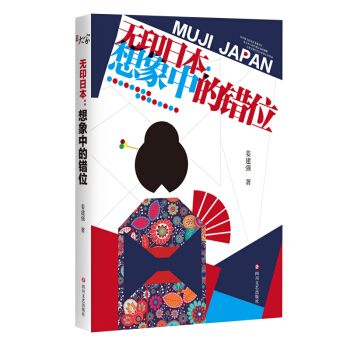
![人文中国书系-中国绘画(英) [Chinese Painting] pdf epub mobi 电子书 下载](https://pic.tinynews.org/12249170/59f29a14Ndfbe1eac.jpg)
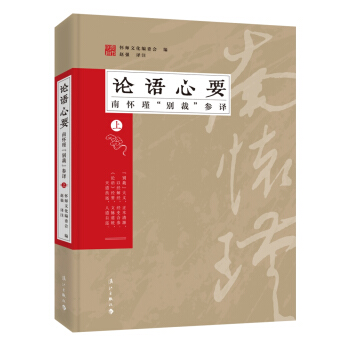
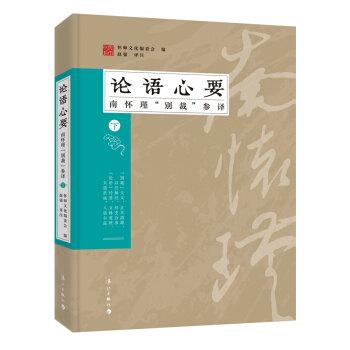

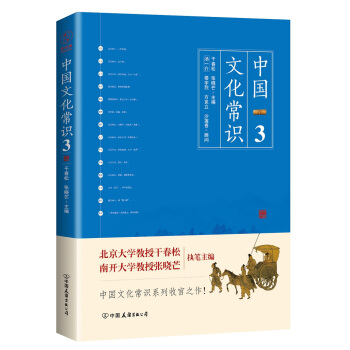
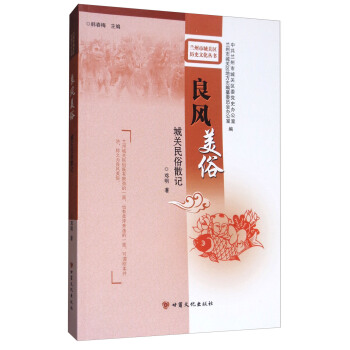



![中外文化与文论(第36辑) [Cultural Studies and Literary Theory] pdf epub mobi 电子书 下载](https://pic.tinynews.org/12250759/5a38cf54Nae629b9a.jpg)
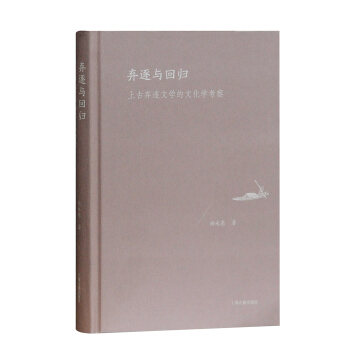
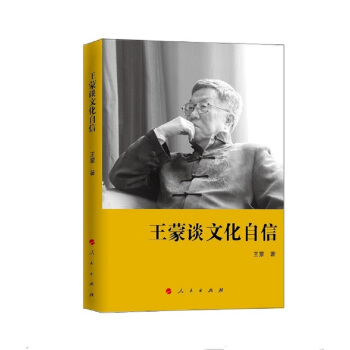
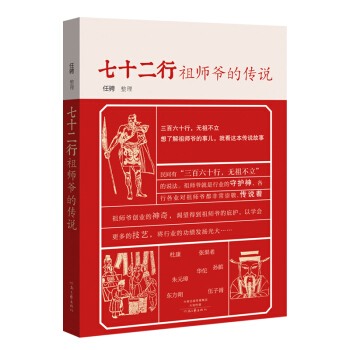


![新编中国文化产业政策法规与典型案例评析 [Chinese Cultural Industry Policies Regulations and Typical Cases (New Edited)] pdf epub mobi 电子书 下载](https://pic.tinynews.org/12251785/5a38cf3fN03cc890c.jpg)
